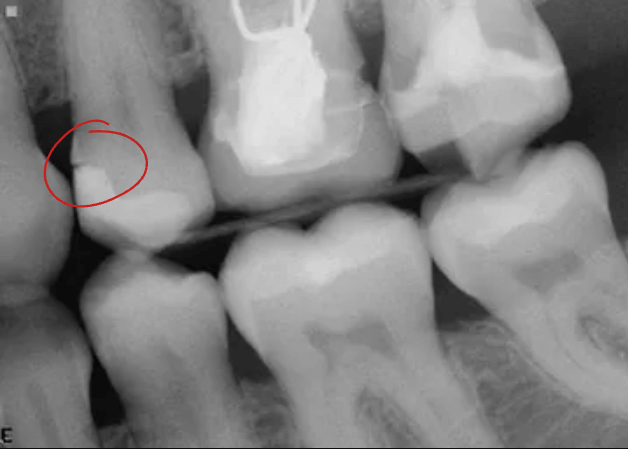Dental Filling Open Margin

What Is A Dental Filling Open Margin?
A Dental Filling is a common restorative procedure that repairs damaged or decayed teeth by removing the affected area and filling it with a durable material such as composite resin. Ideally, the filling creates a smooth, continuous surface, preventing bacteria and food particles from becoming trapped between the tooth and the filling.
However, a Dental Filling Open Margin occurs when a gap or space forms between the filling and the tooth’s surface. This issue can often be detected only on dental x-rays, though it may lead to a range of oral health problems if not addressed promptly. Left untreated, an open margin can result in further tooth decay, gum disease, and even tooth loss.
Before you contact a Toronto dentist to examine a Dental Filling Open Margin, there are some things you should know as a patient:
- Why Do Dental Filling Open Margins Happen?
- Signs And Symptoms Of A Dental Filling Open Margin
- Treatment Options For A Dental Filling Open Margin
- Managing A Dental Filling Open Margin Until You Can See The Dentist
- Frequently Asked Questions About Dental Filling Open Margins
If you have questions about a Dental Filling Open Margin or other dental problems, please contact us for more information.
Why Do Dental Filling Open Margins Happen?
Several factors can contribute to a Dental Filling Open Margin:
- Poor Filling Placement: If a filling is improperly placed or the cavity isn’t fully cleaned before the filling is applied, an open margin may occur.
- Subgingival Tooth Margins: When decay extends deep below the gum line, it can be challenging to create a properly sealed filling, which may leave open margins.
If you suspect an open margin, it’s crucial to visit your dentist to prevent further complications. If you have further questions about Open Margins under a Dental Filling, please contact us.
Signs and Symptoms of A Dental Filling Open Margin
Here are some common symptoms of a dental filling with an open margin:
- Tooth Sensitivity: Increased sensitivity to hot or cold foods and beverages.
- Tooth Pain: Discomfort when chewing or biting.
- Gum Swelling: Tenderness or swelling in the gums near the affected filling.
- Food Trapping: Food particles may frequently get stuck around the filling, requiring more frequent flossing.
- Visible Gap: A noticeable space between the tooth and filling can sometimes be felt or seen.
- Tooth Discoloration: Dark stains under the filling may indicate decay or infection.
If you notice any of these signs, it’s essential to see your dentist as soon as possible to prevent worsening damage. If you have further questions about signs and symptoms of a Dental Filling Open Margin, please contact us.
Treatment Options for A Dental Filling Open Margin
If your dentist identifies a dental filling open margin, they may recommend one of the following treatments:
- Filling Replacement: Removing the current filling and placing a new one to ensure a proper seal.
- Patching the Margin: In some cases, the gap can be filled with additional composite material.
- Dental Crown: If the damage is extensive, a crown may be needed to protect the tooth.
The appropriate treatment depends on the severity of the open margin. Schedule an appointment with your dentist to determine the best course of action. If you have further questions about treatment options for a Dental Filling Open Margin, please contact us.

Managing A Dental Filling Open Margin Until You Can See the Dentist
If you experience symptoms of an open margin but cannot immediately visit your dentist, here are some steps to manage the situation:
- Maintain Good Oral Hygiene: Brush and floss gently around the affected tooth to keep it clean and reduce the risk of infection.
- Use Over-the-Counter Pain Relievers: Medications like ibuprofen or acetaminophen can alleviate discomfort.
- Avoid Chewing on the Affected Side: To prevent further damage, avoid eating on the side where the filling is located.
While these methods may provide temporary relief, it’s important to schedule a dental appointment as soon as possible. If you have further questions about how to manage and treat a Dental Filling Open Margin, please contact us.
Frequently Asked Questions About Dental Filling Open Margins
- What problems can arise from an open margin?
An open margin can allow bacteria and food particles to enter, leading to tooth decay, gum disease, and even tooth loss if left untreated.
- How is an open margin diagnosed?
A dentist can diagnose an open margin through a clinical examination and bitewing dental X-rays to detect gaps between the filling and tooth.
- How is an open margin treated?
Treatment may involve removing the existing filling, addressing any underlying issues, and placing a new, properly fitted filling.
- Can an open margin be prevented?
Ensuring precise placement, proper tooth preparation, and using appropriate materials can help prevent open margins. Regular dental check-ups are also essential.
Addressing an open margin in a dental filling promptly is essential to prevent further complications like decay or gum issues. If you have further questions about how to manage and treat a Dental Filling Open Margin, please contact us.

